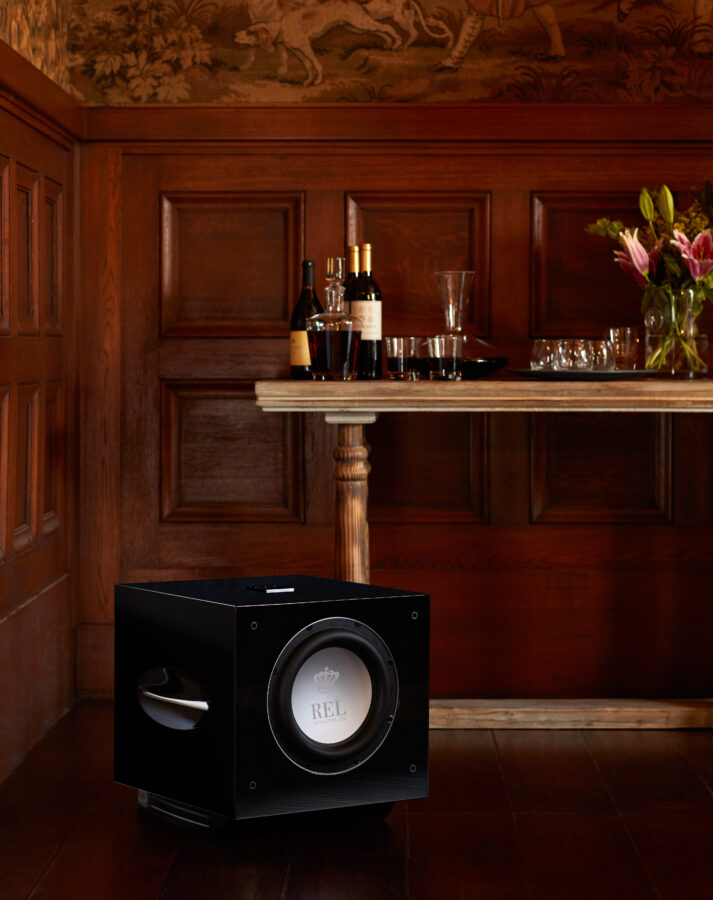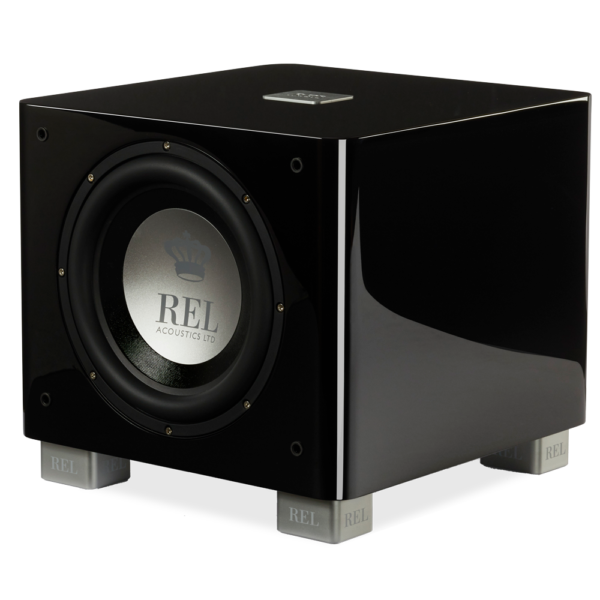Blog
Fine Tuning Can Pay Huge Dividends
Corner Tuning is the Final Tweak to Great Bass
“It’s like paying for a 100-watt subwoofer, getting home, and realizing they gave you a 400-watt subwoofer!”
One of the techniques that we teach everyone who comes to work for REL is how to make fine-tuning of corner placement the culmination of setting up a REL.

After you’ve connected it to the High-Level Connection, decided on the proper phase, set crossover and gain and even toed-in in your REL, there’s one final step needed to get great sound. If you’ve read this introduction, congrats…because you care about sound quality and getting it right. We’re so grateful for customers and dealers like you, and our research reveals that many REL buyers are just like you. We share these tips and techniques to give everyone access to the full and final measure of performance that’s possible to extract from their own REL.
An important distinction between RELs and our competitors is the certainty we carry that human beings are capable, with a modest amount of training and education, to greatly exceed the performance of computerized (so-called) “room correction systems.” Humans are amazing. We have the capacity to learn almost infinitely. Hell, all that “room correction” represents are the basic, codified rules of acoustics programmed into receivers.
How comprehensive and capable are these system-tuning programs? (Room tuning is accomplished with great dimensions and proper construction, not with eq and delay.) I’d say they’re just about as good as ABS brakes are on a race car, which is why race cars aren’t fitted with consumer-grade ABS brakes. Do you think you can’t learn how to out brake ABS brakes? Twenty years ago I attended a Skip Barber 2-Day course in high-performance driving at the storied Lime Rock Park racecourse in Lime Rock Connecticut. After about an hour and a half of basic instruction, designed to get us thinking correctly about how to drive properly, we went out to the verges of the race track and were shown (by highly talented instructors) how to brake properly. I’d say we received about 5-10 minutes of verbal instruction, followed by a couple of demonstrations of how to brake fast and hard, and then we attempted it ourselves. In a class of about twenty individuals, including a pair of sixteen-year-old twins who had yet to obtain their driver’s licenses, everyone was able to out-brake their car’s ABS brake system by their second attempt.If I recall, we brought the car up to 40 mph, and then aggressively stepped on the brakes. By releasing a little of the pressure at the precise moment the car shuddered to a stop, it eliminated the skidding that translates to longer braking times and loss of control. I consistently was able to stop 16-20 feet quicker than the ABS fitted to my car. That’s the difference between totaling your cal into the rear bumper of the car in front of you and stopping a few feet shy of contact. Or living and dying.

The point is that normal, untrained humans can quickly take in instruction and put it to good use quickly. Final tuning by you, our “untrained human” involves the physical placement of your new REL to produce cleaner, deeper, and more natural deep bass.
Let’s assume that you’re starting with a single subwoofer, following our guidance and beginning with it toed-in toward the listening position. Your sub should be positioned close to a structural (solidly constructed) corner. At this point, your REL should be angled inward some 30 to 60 degrees toward the listening position. Why close to a corner? Because it’s free power. Yup, typically, you’ll pick up 6 decibels of output simply by putting the corner to work for you.
Wait, don’t others say not to position subwoofers close to a corner? Yes, they do. And many subwoofer manufacturers routinely produce crossovers incapable of being set deeper than 40 Hz, which is technically not sub-bass…Take that in for a moment. They are producing equipment incapable of being adjusted in the very frequencies their customers count on them for the most. Yeah, it’s a bit of a headscratcher for us too. That’s the principal reason not to put corner gain to work for you. If your sub doesn’t extend very deep, it’s a bad idea to place a sub in a corner. Ours do extend deep and we do provide you the ability to limit output down to very low frequencies, so you do get to benefits from free additional output.
Now 6 dB means little to most lay people, but it’s an enormous real-world win. Let’s restate that into terms that show how dramatic 6 dB is. 6 dB is the perceived loudness difference of playing 50 % louder. In amplifier power terms, a subwoofer with a 100-watt amplifier producing 98 dB would suddenly need a 400-watt amplifier to produce 104 dB. That’s why being able to use close-to-corner proximity is such a huge benefit to REL customers.

RELTip™: Carefully mark your original spot. Begin fine-tuning your REL by drawing your REL –while precisely maintaining the correct/existing angle of toe-in you previously achieved–toward your primary listening seat. Using Sneakers begin slowly drawing your REL toward your listening seat. It may take a few attempts to learn the proper technique but try to stop the moment you hear the level of bass suddenly increase as you draw the sub slowly inward at a 45-degree angle toward your seat. It won’t seem like a huge amount, but what’s happening is that you’re fine-tuning and identifying positions where your room is giving you slightly more free output. (Technically, it’s canceling less but who cares? We’ll take free output any time!) Mark each spot carefully so you can return to it in a few moments.
Once you’ve identified the 3-4 locations in a roughly 6”(170mm) draw, return to your original spot, and listen from each of those 3-4 spots. The spot in the corner will almost always be loudest. Try to listen past that to hear whether one or more of the other spots you’ve identified has other, less dramatic, sonic qualities you value. Some may be better balanced and less fat or wooly sounding. Some may have better attack and clarity. It’s your choice to optimize what your ears, and your system, need to sound its best.
Let’s wrap up this Field Notes segment. Close-to-corner placement delivers a number of advantages, the principal among them being more room gain – that’s the “free” 400-watt amp in our lead-in. RELs can take advantage of this because our crossover filters start much lower than most subs. If your subwoofer doesn’t allow crossing over lower than 40 Hz, this technique should be avoided. Mark your locations where deep bass output seems to “pop” and return to them, listening carefully for all the qualities you are looking for. You may well discover that there are levels of nuance and delicacy accessible that were previously absent in your system.










